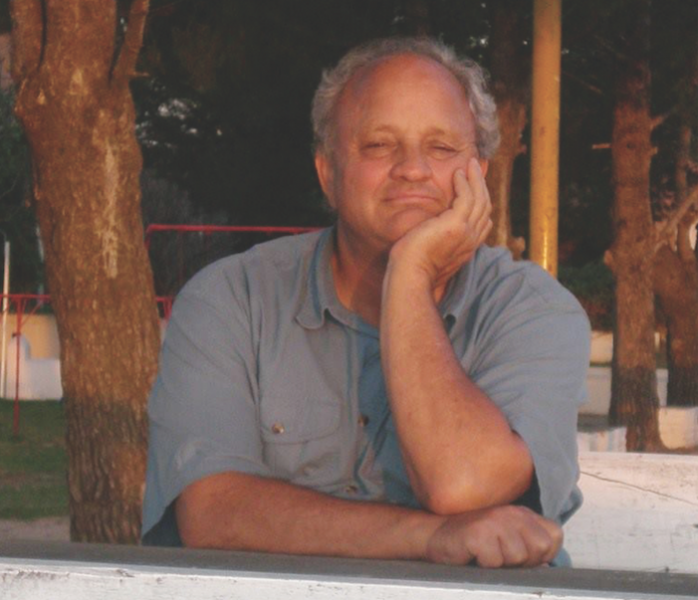Communist Czechoslovakia didn”t provide many food options during weekends.
When University of Idaho geology professor Peter Isaacson, who was in Bolivia on a Fullbright Fellowship research grant, took a stroll to the zoo to find food, he said he noticed a suspicious government official following him.
“That was it. You couldn”t get any food on a weekend in the communist times,” Isaacson said. “It was terrible. And there he was, I waved, and he ducked, y”know.”

Peter Isaacson | Courtesy
Peter Isaacson, a professor of geological sciences, has worked for the University of Idaho for 38 years.
Isaacson, a UI professor since 1978, studied late Paleozoic stratigraphy, or 370 million-year-old layers of rock, within the Andes throughout Bolivia. Since then, Isaacson has found himself in Idaho, a place where he said he geologically feels like a babe in toy land.
Isaacson said he”s studying what the earth was doing at a very ancient time. He said he considers rock sediments to be history books that record most movements on earth.
For example, he said it”s now understood that Idaho and Montana were located near the equator long ago, whereas the rocks he studied in Bolivia were located near one of the earth”s poles.
He said a fun part is finding out why climates changed so quickly.
“We know at that time we went through very significant and rapid climate changes,” Isaacson said. “And last I checked, there weren”t people around to do that.”
He said he started to do some work with Czechoslovakian colleagues in the Communist era concerning rocks he found in Bolivia. He submitted a chunk of rock to a palynologist who studied spores and pollen in the fossil record.
Those rocks, Isaacson said, were discovered to be from the Devonian period, approximately 419 to 358 million years ago. This led to the realization that the ice ages started in the Devonian and not the Carboniferous period, which came approximately 60 million years later.
He said he wasn”t the first to realize this. There was a geologist who found the same thing in Brazil, but no one believed him.
“And I was going, “You North American snobs,”” he said. “Because he was South American and he had come up with “that there was a glaciation at this time,” but nobody believed him.”
Isaacson said he was awarded a second Fulbright Scholarship to work with an Argentine colleague on dating more Bolivian and Montanan rocks through palynology.
Within the geology community, some conceded the Brazilian researcher found something, but Isaacson said there was more credence in the theory once he found rocks in Bolivia, which suggested a massive glaciation over a larger area.
He said scientists just had to swallow the fact. There was concern because the climate was supposed to be warm at the time, but Isaacson said the evidence was in front of them the entire time.
The geologic community has since moved forward and made steps in accepting and understanding work submitted by diverse groups, Isaacson said.
He said it”s hard to get research accepted in the scientific community. Many get stuck in old methods of thought, and it can be difficult to take on those set-in-stone ideas. At times, he said there is a North American and European arrogance.
Isaacson moved to Idaho after his first teaching job in New England, and he said he was in awe.
There were multiple areas with rocks of different ages that nobody had ever researched. He said he was like a fish flopping around on a dock for awhile. He didn”t know where he was going to start.
When new hires come into UI”s department of geological sciences, Isaacson said he tells them Idaho is misunderstood both culturally and geologically.
He said paleontology is one of the courses he teaches at UI, which naturally covers evolution.
“But I say we have to accept evolution at least from the point of view that there is change through time,” Isaacson said.
He said a relative timescale for the earth”s history is necessary. In a practical sense, if many people drive cars with oil, there has to be some acceptance of a timescale to project where more oil may be on the earth.
Working off the beaten path in Idaho, Isaacson said he”s met kind, accommodating people in this state.
Isaacson said there are two things that excite him about his work as a professor – research and getting students jazzed. He said he wants his students to feel the excitement of discovery because there is still so much left unanswered.
“As I tell them, I point out things we just still don”t know and say, “Hey, I don”t think I have enough time left to get these things figured (out), but you guys need to do it,”” Isaacson said.
He said he”s a man thirsting for more knowledge before he flames out.
Jake Smith can be reached at [email protected] or on Twitter @notjakesmith